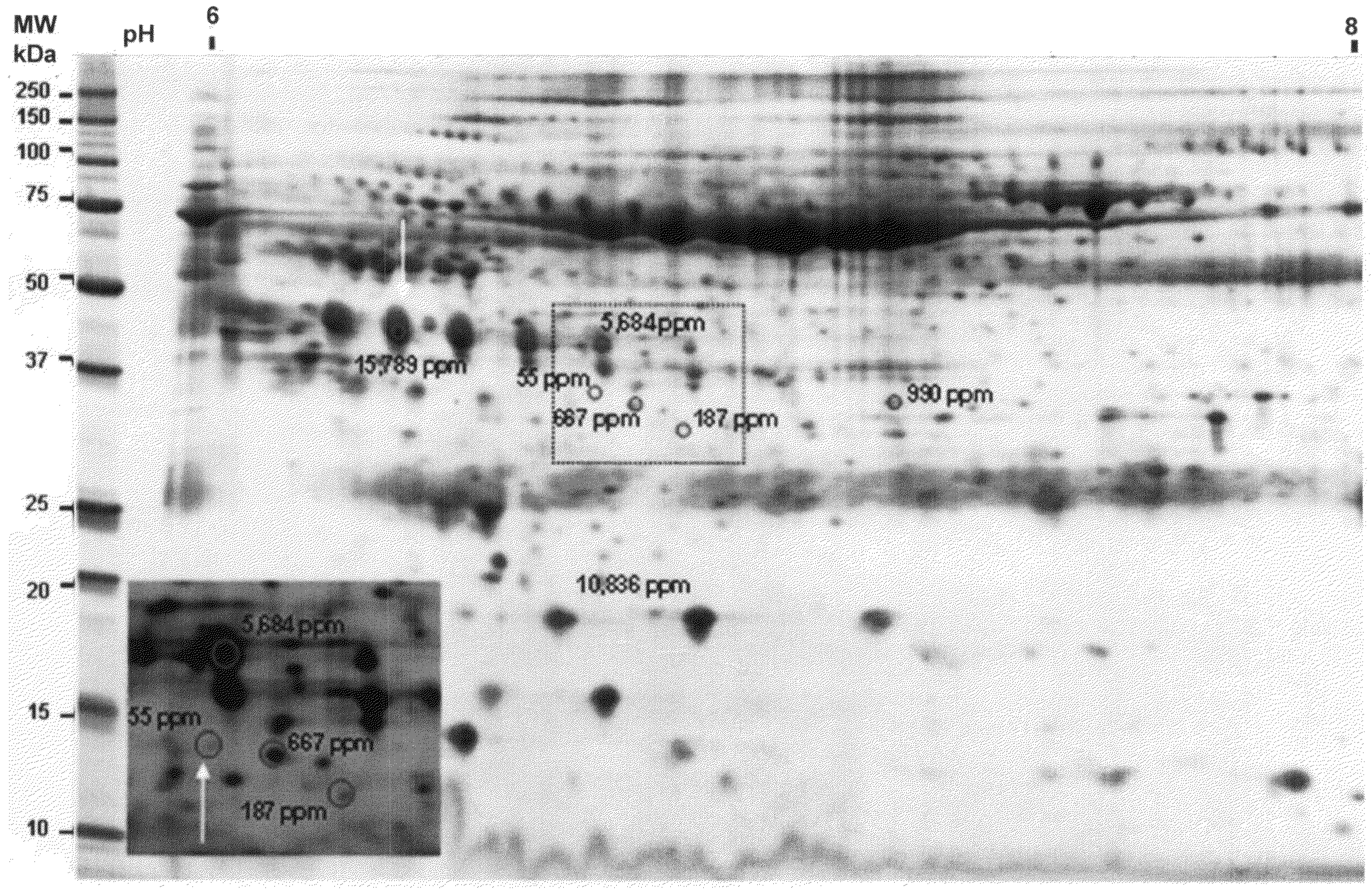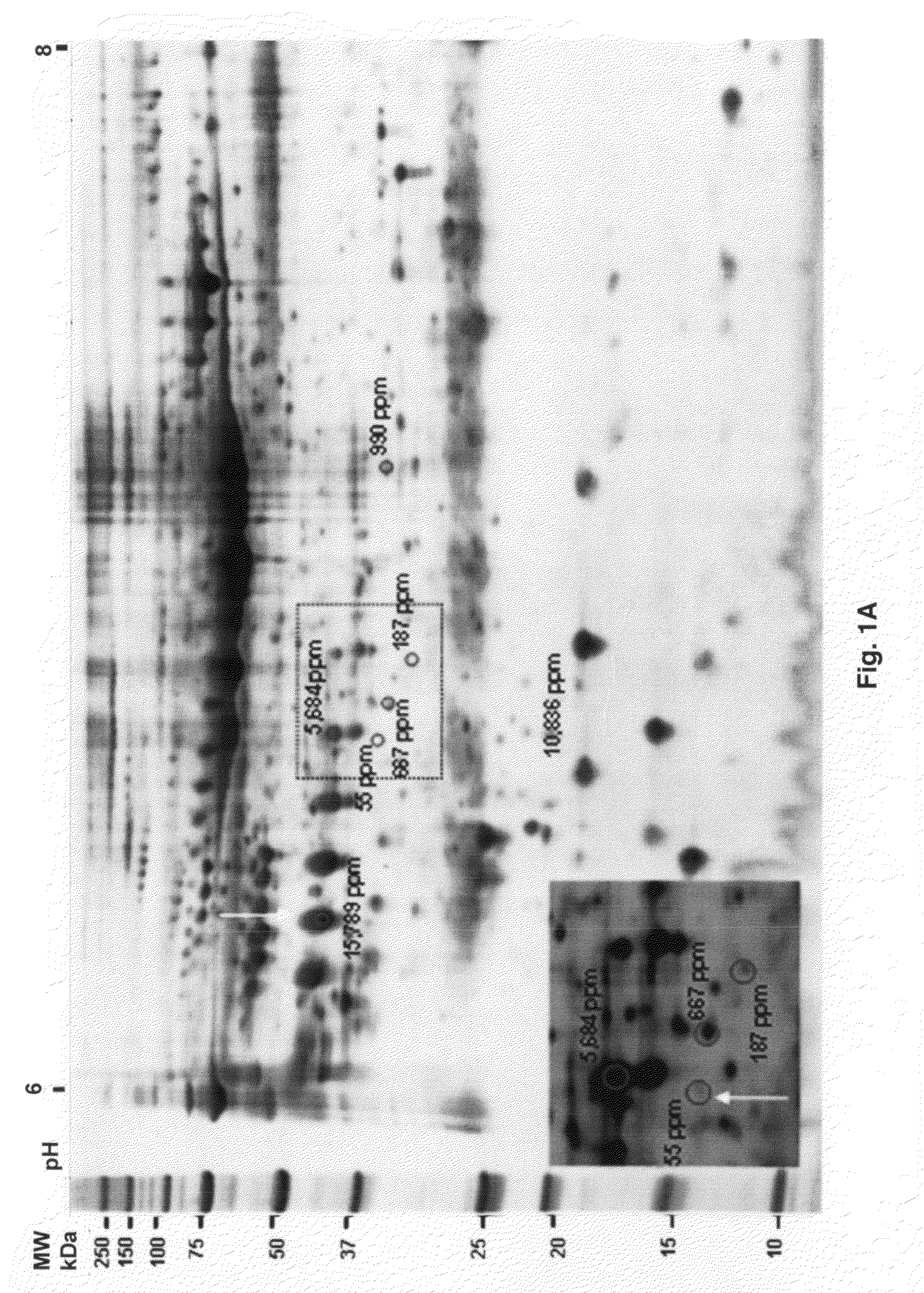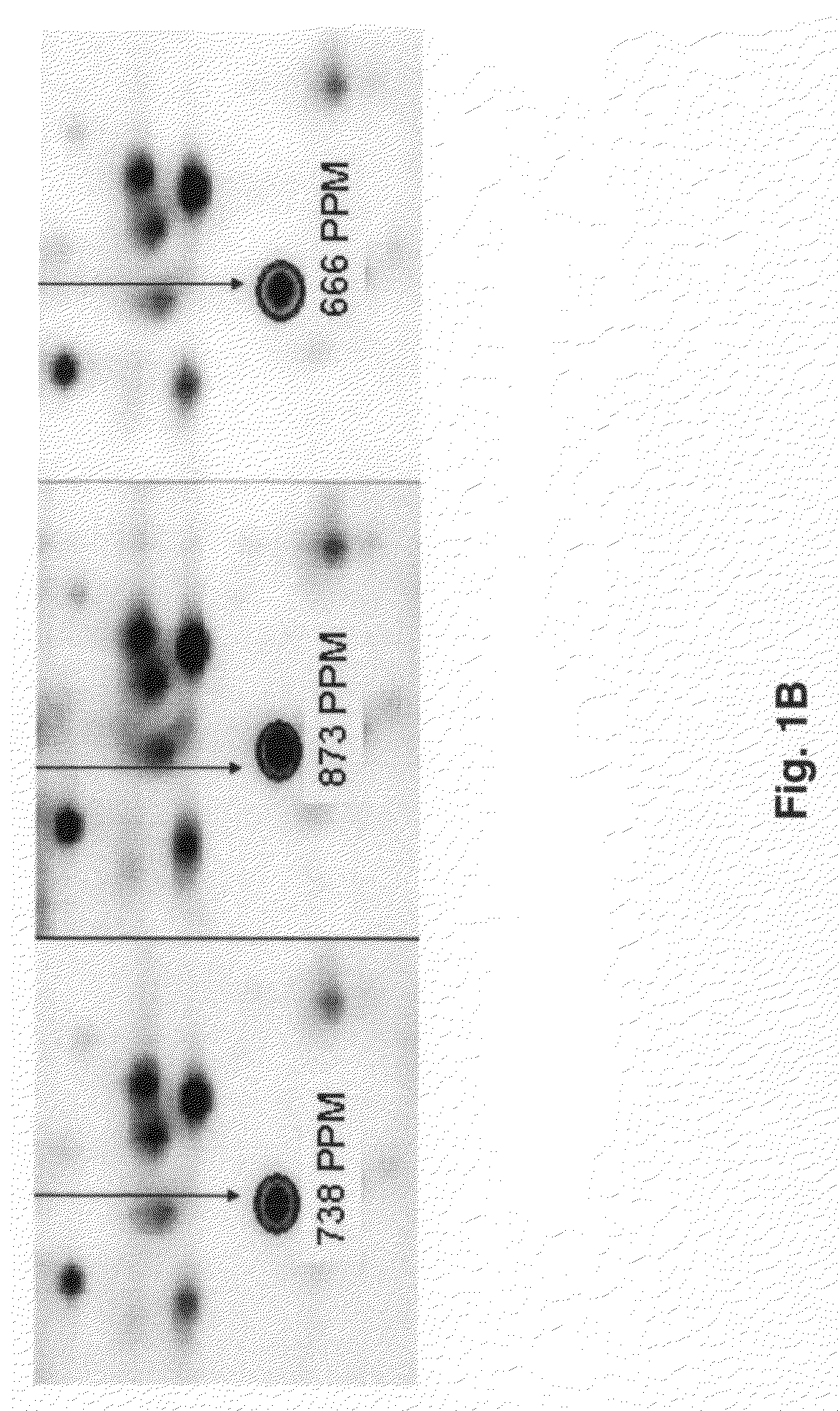Multiple forms of Alzheimer's disease based on differences in concentrations of protein biomarkers in blood serum
- Summary
- Abstract
- Description
- Claims
- Application Information
AI Technical Summary
Benefits of technology
Problems solved by technology
Method used
Image
Examples
Embodiment Construction
[0110]The present invention relates to protein biomarkers for Alzheimer's disease, whereby lack of detection, detection, and / or the quantity of a first protein biomarker in a biological sample from Alzheimer's disease patients correlates with significant differences in the quantities of other protein biomarkers of Alzheimer's disease. When Alzheimer's disease patients and age-matched normal control subjects are each placed into separate categories based on whether they do or do not have detectable quantities of the first protein biomarker, the protein identities of, and the differences in the quantities of the first protein biomarker and / or one or more other protein biomarkers in the biological sample provide opportunities: to improve sensitivity and specificity of differential diagnosis. To measure disease severity and monitor drug response. To monitor drug clinical trial stratification of patients. To indicate differences in neuronal degeneration mechanisms in the patients. To mea...
PUM
| Property | Measurement | Unit |
|---|---|---|
| Concentration | aaaaa | aaaaa |
| Biological properties | aaaaa | aaaaa |
Abstract
Description
Claims
Application Information
 Login to View More
Login to View More - R&D
- Intellectual Property
- Life Sciences
- Materials
- Tech Scout
- Unparalleled Data Quality
- Higher Quality Content
- 60% Fewer Hallucinations
Browse by: Latest US Patents, China's latest patents, Technical Efficacy Thesaurus, Application Domain, Technology Topic, Popular Technical Reports.
© 2025 PatSnap. All rights reserved.Legal|Privacy policy|Modern Slavery Act Transparency Statement|Sitemap|About US| Contact US: help@patsnap.com



